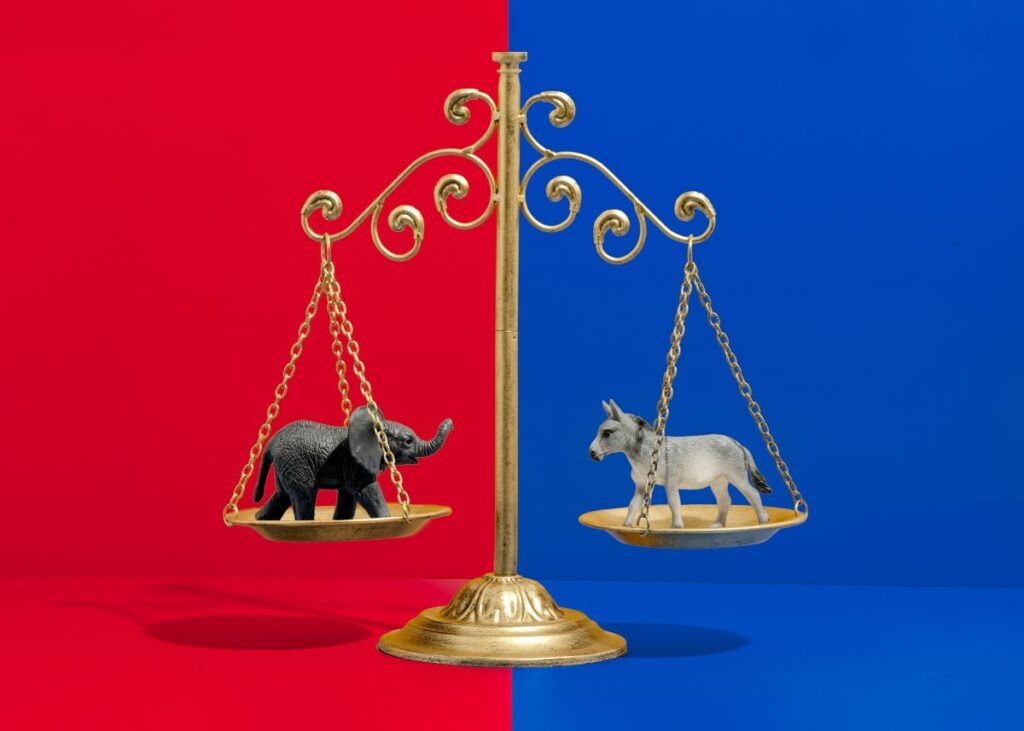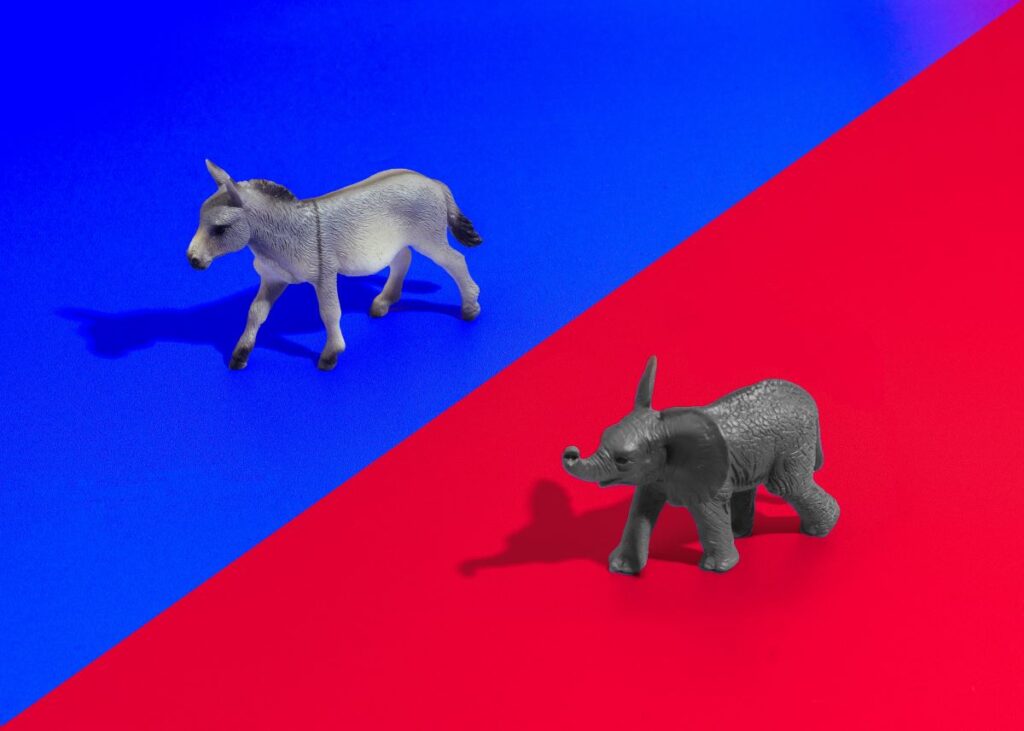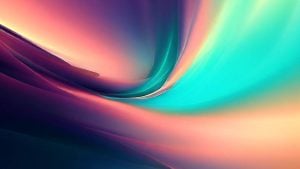As the presidential campaign reaches a fever pitch, few voters are likely to pause and question why Democrats are associated with the color blue and Republicans with red. It’s just always been that way — or has it?
You might be surprised to learn that these color associations manifested somewhat recently — in the 2000 election, to be exact. Before then, the colors were not set in stone and were even reversed in certain press venues in past years. Then came the lengthy contest between George Bush and Al Gore in 2000, which wasn’t fully decided until December of that year. During this time, television news stations used the color red on United States maps to denote Republican-voting areas, and blue was used for Democrat-leaning states.
We all know how that contest ended. However, the color coding for Democrats and Republicans has stuck, and is showing no signs of changing. Just like the iconic Donkey and Elephant, these anchors to each party seem here to stay.
What’s the reason for this? Why are conservatives associated with red in the U.S., and blue with more liberal views? These colors are reversed for conservative and liberal parties in the UK. However, the following could offer some insights into the personalities of both political parties in the U.S. — and the Americans who tend to gravitate toward them:

Red is for Republican
When you think about it, it’s a bit funny that Republicans are linked with the color red. You might think red, with all its energy and fire, would be better suited for the Democrats, while the calm and steady blue would fit the Republicans. But red actually works well for the Republican Party. It stands for strength and ambition, which are big deals for Republicans. They’re known for being all about big business and making money, even if they’re not always in the spotlight for social issues.
Sometimes, red can come off as a bit aggressive or pushy, and some Democrats might say that’s just like the Republicans. Red also has a vibe of going after what you want, even if it means being a bit self-centered. But Republicans would probably say they’re just trying to make the most of life, which is another thing red is all about.
Red is the showstopper of colors. It grabs your attention and makes you feel powerful and excited. Some Democrats might wish their party had snagged red for themselves, but then again, blue suits the Democratic vibe of being cool and thoughtful.
As for the elephant, it’s not just any animal that became the symbol for the Republican Party. Back in the 1800s, a political cartoonist named Thomas Nast used an elephant to represent the Republicans in one of his drawings. The elephant was big and strong, just like the Republicans saw themselves. Plus, elephants are known for having good memories, which could be a nod to the party’s focus on tradition and conservative values. So, the elephant stuck around as the symbol for the party, and it’s been that way ever since.
Democratic Blue
Blue is a color that evokes a sense of calm and dependability. It’s thoughtful, caring, and steadfast, embodying qualities of expertise and trustworthiness. It’s no wonder that blue is often chosen as a favorite color by people around the world. While blue is frequently associated with conservative movements and values, it also represents duty, patience, and perseverance.
In the context of the Democratic Party, blue symbolizes wisdom and strong character, aligning with the party’s ideals. Democrats are generally committed to working diligently for all individuals, regardless of their socioeconomic status. However, blue can also be perceived as inflexible and overly sensitive, which are criticisms that some Republicans might level against Democrats. Those who are drawn to blue tend to be easygoing and charismatic, traits that have been attractive in many notable Democratic candidates.
The donkey, the symbol of the Democratic Party, complements the color blue. Like the color, the donkey signifies hard work and determination. It has been a symbol of the party since the 19th century, representing the party’s commitment to justice and persistence. Together, the color blue and the donkey embody the Democratic Party’s values of compassion, steadiness, and a focus on the greater good.

Conclusion
So, are you stimulated by the vibrant power and optimism of Republican red, or are you drawn to capable, trustworthy and cool Democratic blue? We are continually influenced by color and the associated vibrations, whether we are aware of it or not. What do the colors red and blue stir up in you? Do you automatically associate a color with your favorite political party?
Being aware of the effects of color on the human mind can allow us to think more independently while still enjoying the abundant visual stimuli all around us. Be mindful of the influence of political advertising this election season, and use your intuition and your heart when making your final decision.







